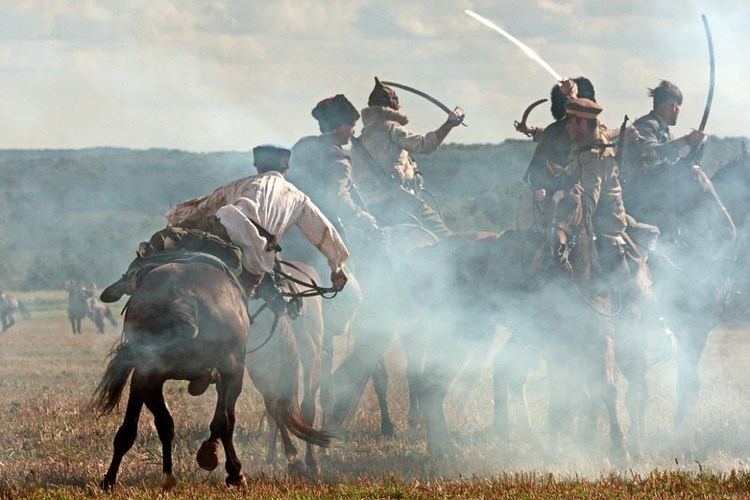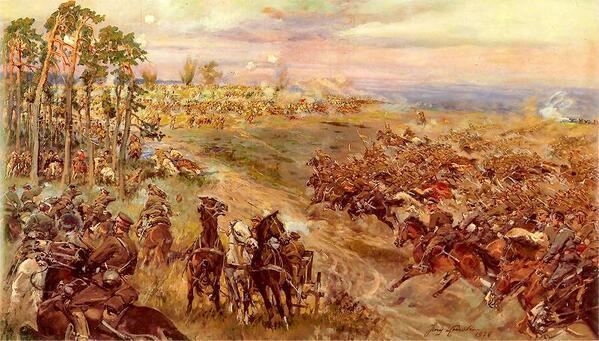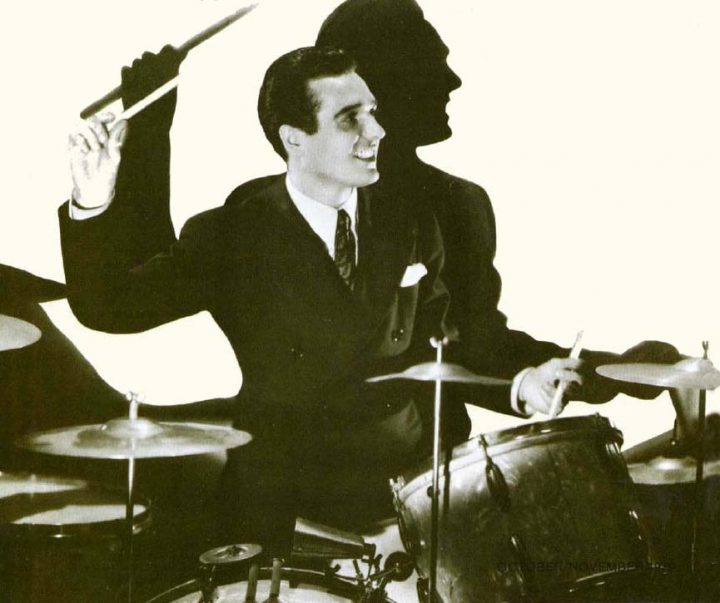SobieskiSavedEurope
Gold Member
- Thread starter
- Banned
- #501
Erazm Jerzmanowski - Polish millionaire
06-25-2009
last update 06-25-2009, 13:37
Erazm Józef Jerzmanowski (1844-1909) lived in New York for over twenty years; a long time in a wonderful home on Madison Ave. at number 818.
Google+TumblrFacebookTwitterMore

He was one of the leading figures in the life of the then American Polonia. An energetic industrialist, patron of education and science gained recognition of industrial spheres and professionals as the founder of "Equitqble Gas Light Co." (1882) and its president for 13 years. He also founded gas companies in Chicago, Baltimore, Troy, Albany, Yonkers, Brookly, Utica, and Memphis. He perfected the technologies of the gas industry with 17 patents. The network of gas companies brought profits. Jerzmanowski made a millionth wealth.
He was born on June 2, 1844 in Tomisławice (Kalisz). He came from a landowning family. He graduated from high school in Warsaw. Studies at the Polytechnic Institute in Puławy interrupted the January Uprising in which he took part. After his fall he took refuge in Galicja, and from there he went to France, where he continued his education, among others. at the School of Engineering and Military Artillery in Metz. He fought in the Franco-Prussian war. The defeat of France dispelled the hopes of Polish exiles.Jerzmanowski remained in France. He received a job with Jessie de Motey, an industrialist specializing in the production of lighting gas. The company sent him to the United States where he came in 1873.
In addition to his professional work, which he devoted a lot of time, Jerzmanowski did not lose contact with the "old country". He was interested in Polonia's affairs and emigration, which he opposed. On his initiative and thanks to his finances, on December 25, 1886, the Central Charity Committee in New York was founded, the purpose of which was to help the Poles arriving here. Apart from Jerzmanowski, actively involved in the Committee were: Dr. Wincenty Krzyżanowski, Karol Bodzenta Chłapowski, Ignacy Pawłowski, Dr. Wincenty Żółnowski, priest. Hieronim Klimecki. The Committee opened a recruitment office for Polish immigrants. Erazm Jerzmanowski founded and financed the Association for Help for the Poor. He subsidized both parish schools, reading rooms, summer camps for children and nurserymies operating in the Polonia and in the country. He financed the stained-glass windows of Józef Mehoffer in the Wawel cathedral, he sent permanent subsidies for the Polish Gymnasium in Cieszyn, the Polish Theater in Krakow, the Ziemski Bank in Poznań, the People's Reading Society in Poznań, and the Kasa im. Mianowski and Opieki im. Jerzmanowski's parents (Franciszek and Kamila from Kossowski) in Warsaw. In Jersey City, NJ founded the church of St. Anthony of Padua. It is difficult to estimate the entire material benefits of this man for various purposes. For example, it can be pointed out that in the years 1886-1896 his dedication was calculated for PLN 50,000. dollars. In 1890, Jerzmanowski entered the Council of the National Museum in Raperswill, Switzerland, bringing a round sum to the ticket office of this institution.
In 1896, Jerzmanowski and his wife, an American, Anna of the Koesters decided to leave America. He settled in Prokocim near Krakow, where he often came for holidays.He took care of education. He founded a magazine for peasants "Polish People". The Society of the People's School appointed Jerzy Jerzmanowski an honorary member because he owed his development to him and his money.
Erazm Jerzmanowski died on February 7, 1909, after previous pneumonia and partial paralysis of the brain. The estate was written by his wife, and after her death (1912), the Erasmus and Anna Jerzmanowski Foundation came into force, while the Academy of Skills (from 1919 Polish Academy of Learning) took the distribution of the awards.Total 40 thousand crowns (the equivalent of 12 kg of gold) was first granted in 1915. It was received by Henryk Sienkiewicz and Ignacy J. Paderewski. The war destroyed the foundation, and the communist authorities caused the abandonment of the PAU (1952).
The Krakow environment, represented by the Friends of Prokocimia Society Erasmus and Anna Jerzmanowski (existing since 1989), the Order of Father Augustians, the authorities of the Krakow and Małopolska local governments, and the "Krakow News" took care of the reminder of this great Pole. The occasion is the hundredth anniversary of his death and his 165th birthday. The patron of the celebrations was taken by Cardinal Metropolitan of Cracow, Fr. Stanisław Dziwisz and the president of Cracow prof. Jacek Majchrowski. There were exhibitions and lecture
Google Translate
06-25-2009
last update 06-25-2009, 13:37
Erazm Józef Jerzmanowski (1844-1909) lived in New York for over twenty years; a long time in a wonderful home on Madison Ave. at number 818.
Google+TumblrFacebookTwitterMore

He was one of the leading figures in the life of the then American Polonia. An energetic industrialist, patron of education and science gained recognition of industrial spheres and professionals as the founder of "Equitqble Gas Light Co." (1882) and its president for 13 years. He also founded gas companies in Chicago, Baltimore, Troy, Albany, Yonkers, Brookly, Utica, and Memphis. He perfected the technologies of the gas industry with 17 patents. The network of gas companies brought profits. Jerzmanowski made a millionth wealth.
He was born on June 2, 1844 in Tomisławice (Kalisz). He came from a landowning family. He graduated from high school in Warsaw. Studies at the Polytechnic Institute in Puławy interrupted the January Uprising in which he took part. After his fall he took refuge in Galicja, and from there he went to France, where he continued his education, among others. at the School of Engineering and Military Artillery in Metz. He fought in the Franco-Prussian war. The defeat of France dispelled the hopes of Polish exiles.Jerzmanowski remained in France. He received a job with Jessie de Motey, an industrialist specializing in the production of lighting gas. The company sent him to the United States where he came in 1873.
In addition to his professional work, which he devoted a lot of time, Jerzmanowski did not lose contact with the "old country". He was interested in Polonia's affairs and emigration, which he opposed. On his initiative and thanks to his finances, on December 25, 1886, the Central Charity Committee in New York was founded, the purpose of which was to help the Poles arriving here. Apart from Jerzmanowski, actively involved in the Committee were: Dr. Wincenty Krzyżanowski, Karol Bodzenta Chłapowski, Ignacy Pawłowski, Dr. Wincenty Żółnowski, priest. Hieronim Klimecki. The Committee opened a recruitment office for Polish immigrants. Erazm Jerzmanowski founded and financed the Association for Help for the Poor. He subsidized both parish schools, reading rooms, summer camps for children and nurserymies operating in the Polonia and in the country. He financed the stained-glass windows of Józef Mehoffer in the Wawel cathedral, he sent permanent subsidies for the Polish Gymnasium in Cieszyn, the Polish Theater in Krakow, the Ziemski Bank in Poznań, the People's Reading Society in Poznań, and the Kasa im. Mianowski and Opieki im. Jerzmanowski's parents (Franciszek and Kamila from Kossowski) in Warsaw. In Jersey City, NJ founded the church of St. Anthony of Padua. It is difficult to estimate the entire material benefits of this man for various purposes. For example, it can be pointed out that in the years 1886-1896 his dedication was calculated for PLN 50,000. dollars. In 1890, Jerzmanowski entered the Council of the National Museum in Raperswill, Switzerland, bringing a round sum to the ticket office of this institution.
In 1896, Jerzmanowski and his wife, an American, Anna of the Koesters decided to leave America. He settled in Prokocim near Krakow, where he often came for holidays.He took care of education. He founded a magazine for peasants "Polish People". The Society of the People's School appointed Jerzy Jerzmanowski an honorary member because he owed his development to him and his money.
Erazm Jerzmanowski died on February 7, 1909, after previous pneumonia and partial paralysis of the brain. The estate was written by his wife, and after her death (1912), the Erasmus and Anna Jerzmanowski Foundation came into force, while the Academy of Skills (from 1919 Polish Academy of Learning) took the distribution of the awards.Total 40 thousand crowns (the equivalent of 12 kg of gold) was first granted in 1915. It was received by Henryk Sienkiewicz and Ignacy J. Paderewski. The war destroyed the foundation, and the communist authorities caused the abandonment of the PAU (1952).
The Krakow environment, represented by the Friends of Prokocimia Society Erasmus and Anna Jerzmanowski (existing since 1989), the Order of Father Augustians, the authorities of the Krakow and Małopolska local governments, and the "Krakow News" took care of the reminder of this great Pole. The occasion is the hundredth anniversary of his death and his 165th birthday. The patron of the celebrations was taken by Cardinal Metropolitan of Cracow, Fr. Stanisław Dziwisz and the president of Cracow prof. Jacek Majchrowski. There were exhibitions and lecture
Google Translate








/https://public-media.smithsonianmag.com/filer/a3/a5/a3a5e93c-0fd2-4ee7-b2ec-04616b1727d1/kq4q5h7f-1498751693.jpg)










